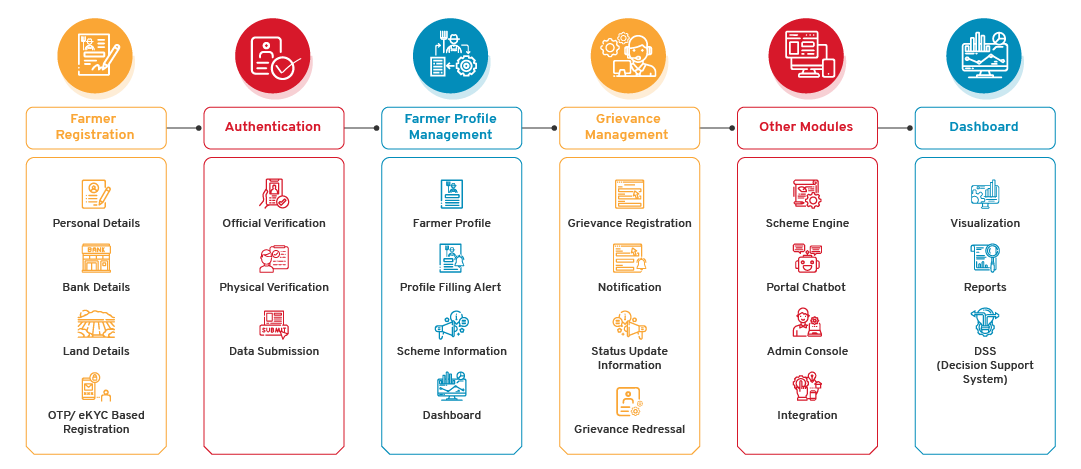Approximately 60 percent of the Indian population is engaged in agriculture, which contributes about 18 percent to India's GDP. According to the Economic Survey of India 2021-22, the prediction of GDP growth for FY23 is 8-8.5%. The share of the agriculture sector in total gross value added (GVA) of the economy has a long-term trend of nearly 18 percent, the survey said. According to the estimate, the share of the agriculture and allied sectors in total Gross Value Added (GVA) has improved to 20.2 percent in 2020-21 and 18.8 percent in 2021-22. And the farmer’s population is nearly 150 million. India has allocated Rs 1.33 lakh crores for Agriculture in this union budget.
To address these challenges, one approach that has been attracting substantial investment is to connect geographically distributed Agri-markets through a single online Agri-platform. Combining geographically distant markets within a typical platform can boost market competition, promote transparency of the expense discovery approach, and improve farmers’ profitability.
Some Examples:
The World Bank invested $4.2 billion between 2003 and 2010 to develop infrastructure for information and communication technologies in the developing world. Different countries have established online Agri-platforms to change conventional markets, with well-known examples such as the Ethiopia Commodity Exchange (ECX) and the e-National Agriculture Market (eNAM) in India. While it is postulated that making online Agri-platforms can help farmers for the earlier noted causes, rigid practical evidence is restricted. Furthermore, qualitative proof has offered integrated impacts for some of the current platforms.
In June 2021, the government shared a paper on the India Digital Ecosystem Architecture (IDEA), detailing the architecture for AgriStack. There are existing technologies and applications, such as Kisan Suvidha, which provide agriculture-related information from existing schemes. But these do not integrate databases, said experts. IDEA /AgriStack is billed as the underlying platform (like Android or iOS) over which apps like Kisan Suvidha and others will run.
Implementation of Unified Market Platform (UMP):
UMP was founded in 2014 by the state government of Karnataka to unify all transactions arising in the state’s regulated farming wholesale markets to be carried out within one online platform. By November 2019, 162 of the 164 regulated markets across 30 districts in the state have been integrated into UMP. Hence, it is of substantial value to empirically consider the rate of execution of this statewide Agri-platform that has affected market prices and farmers’ profitability. In addition, we operate the research to relieve light on systemic components that should be considered in the creation and execution of other Agri-platforms around the world.
Why are Farmer Registries Needed?
- A farm-business registration system is used to facilitate access to government services
- Government departments can verify farm-business eligibility for programs
- Framing of farm-centric and outcome-driven policies
- They assist in rural poverty reduction by warranting that policies are more accurate,
- cost-effective and transparent
- They secure better targeting of populations in demand of help by streamlining the method of assigning social safety to deficient rural areas.
- Filtering out suspect farmers and bogus beneficiaries
- Creating an integrated digital ecosystem for stakeholders across the farm-to-fork chain
Krushak Odisha- A one-stop digital farmers’ repository
CSM Technologies has built the digital backbone for Krushak Odisha, one-stop database of farmers designed in sync with the state government’s avowed 5T governance framework. This seamless data repository serves as the single version of truth for any information on the farmer’s demographics and assets. What differentiates this solution from other farmer databases is that it aggregates info with the farmer as the premise and not his family.
The database is 100% Aadhaar seeded with the authenticated bank details of farmers. The digital solution is integrated with external databases like Paddy Procurement Automation System (PPAS), Millet Procurement Automation System (MPAS), Aadhaar, Bhulekh (the state’s land records database), seed supply, fertilizer management, Soil Health card, and Pradhan Mantri Fasal Bima Yojana (PMFBY).
Krushak Odisha, the golden record database, has enabled the identification of 66 lakh unique farmers (from around 81 lakhs unique Aadhaar numbers) of which 49 lakhs have been approved post verification. The system captures 60-70 fields of farmers including demographics, occupation, crop, etc.
A unique application id is generated and the system envisages the allotment of Kisan Parichay Patras to farmers. The project aims to digitize the farm economy and is equipped with a decision support system in the ADAPT portal to aid decision-making by policymakers.
- Unique identity proof
- Instant eligibility check
- Identification of Beneficiaries
- Detection of Anomalies
- Verified Farmers’ Database
- Scheme Monitoring by Extension Workers
- A one-stop portal for farmer registration
- Verification of farmers’ details by extension workers

































